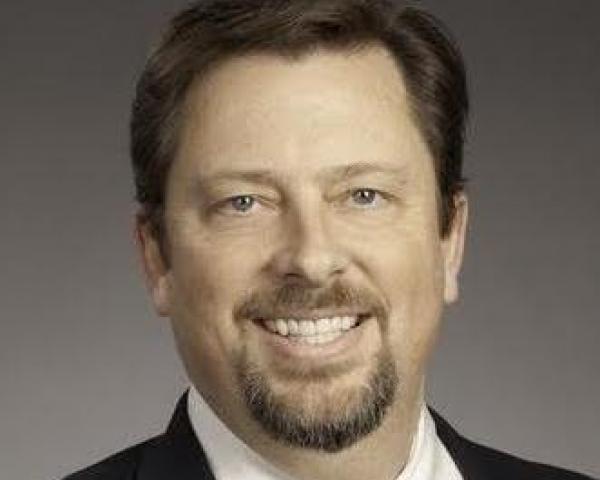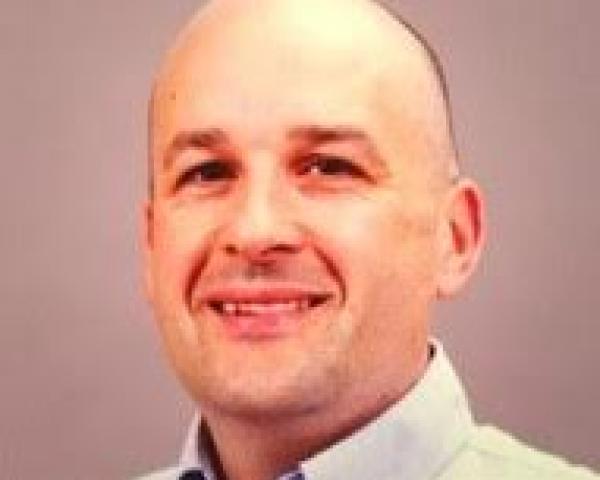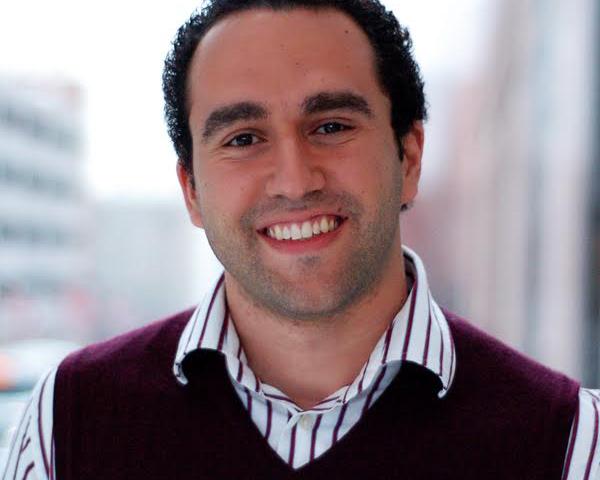 You can find the infographic here.
You can find the infographic here.Blockchain Adoption Starts Accelerating
Full-scale adoption of blockchain remains elusive, but many businesses are already rising to the occasion with exciting use cases.

 You can find the infographic here.
You can find the infographic here.Full-scale adoption of blockchain remains elusive, but many businesses are already rising to the occasion with exciting use cases.

 You can find the infographic here.
You can find the infographic here.
Get Involved
Our authors are what set Insurance Thought Leadership apart.
|
Partner with us
We’d love to talk to you about how we can improve your marketing ROI.
|

Stefan Ateljevic is head of content and community manager at BitFortune. With an extensive background in content creation and love of all things regarding cryptocurrencies, Ateljevic passionately works to help people understand the benefits and potential of the crypto industry.
A lot is possible, but, without bold action now, insurers will face pressures in 2019 and beyond.

Get Involved
Our authors are what set Insurance Thought Leadership apart.
|
Partner with us
We’d love to talk to you about how we can improve your marketing ROI.
|

Ed Majkowski is EY’s insurance sector leader for the Americas and is responsible for EY’s consulting businesses, markets and clients in this region.
Many SMBs become complacent because they think they couldn’t possess enough online assets to attract malicious actors. But....

Get Involved
Our authors are what set Insurance Thought Leadership apart.
|
Partner with us
We’d love to talk to you about how we can improve your marketing ROI.
|

Emy Donavan is serving as global head and CUO of cyber, tech and media PI for Allianz Global Corporate and Specialty (AGCS). In July 2018, she was also appointed to head Allianz SE’s cyber center of competence.
Innovators are exploring the frontier of insurance through smart investments, creative problem solving and new products and services.

Get Involved
Our authors are what set Insurance Thought Leadership apart.
|
Partner with us
We’d love to talk to you about how we can improve your marketing ROI.
|

Tom Hammond is the chief strategy officer at Confie. He was previously the president of U.S. operations at Bolt Solutions.
In Istanbul 150 years ago, the only way to protect a home against fire was to buy insurance--insurers had the only fire departments.

Get Involved
Our authors are what set Insurance Thought Leadership apart.
|
Partner with us
We’d love to talk to you about how we can improve your marketing ROI.
|

Hasan Meral is the head of product and process management at Unico Insurance. He has a BA in actuarial science, an MA in insurance and a PhD in banking.
It is. The great thing about innovation, though, is that we will see another wave of a different size and color in the future.

Has the insurtech wave hit a riptide? At Strategy Meets Action, we think it has.
The riptide analogy generates a powerful image of a turbulent sea, where the strong finally reach the shore, but the weak succumb to the powerful currents and are pulled back out to the sea. The insurtech world is experiencing a similar struggle. We are seeing distinct winners in the insurtech market who are reaching the shore, but the rest – the vast majority – are not making it. Those few who have landed with firm footing, the winners, have captured the attention, and the investment dollars are going to them.
Headlines show that the hype around insurtechs is settling down. We see fewer startups in the U.S., and it is not for the lack of a strong economy. In fact, Strategy Meets Action estimates investment in new technology to be at high levels. So, what’s happening? Investment spending has become more focused. The interest is there, but insurers have collectively started to sort through the flood of information for the best possibilities and select the most promising solutions. From the start of the insurtech phenomenon, we have predicted that many startups will fail, and the industry is now experiencing that.
See also: Insurtech: Revolution, Evolution or Hype?Despite the smaller numbers of startups, we expect to see continued progress on the insurtech front in 2019. Among the frontrunners, progress is accelerating and will continue to take place. Those businesses and solutions with some level of insurance expertise and capabilities are gaining recognition as they demonstrate the ability to advance their technologies and come to insurers with connections.
At InsureTech Connect, we saw many amazing ideas and solutions, but not all have insurance implications. In these cases, insurance may be the wrong industry to champion them. For many of the technology startups trying to break into insurance, it will be easier to fine-tune their applications and solutions for car manufacturers, utility companies, appliance manufacturers or companies that sell direct to consumers. And the sad fact is that some ideas will never fly because they just don’t solve the right problems or have the broad applicability to attract funding.
The other reality for insurtechs is that, as time has gone on, innovation has become more common. It literally is everywhere, and novelty is harder to achieve. The thought of becoming the next “Uber” or the “Netflix” of insurance seems less and less probable.
Last year, Strategy Meets Action said the insurtech wave would continue … and we still believe that. However, it is a smaller number that will come ashore. The barriers to entry are causing the insurtechs that reach insurance to be more focused and purposeful – and this is the reality of an innovative world. Many new startups are losing the “wow” factor before they ever have a chance to get off the ground.
See also: 8 Key Insurtech Trends for 2019The great thing about innovation, though, is that we will see another wave of a different size and color in the future. As new computing trends, 5G, AI (among others) and even quantum computing gain traction and become more feasible and pervasive, a new wave will pick up speed. The key will be to stay ahead of it through monitoring the progress of these technologies, studying these insurtechs and exploring the opportunities that they will provide.
Get Involved
Our authors are what set Insurance Thought Leadership apart.
|
Partner with us
We’d love to talk to you about how we can improve your marketing ROI.
|

Deb Smallwood, the founder of Strategy Meets Action, is highly respected throughout the insurance industry for strategic thinking, thought-provoking research and advisory skills. Insurers and solution providers turn to Smallwood for insight and guidance on business and IT linkage, IT strategy, IT architecture and e-business.
Insurers have a near-constant stream of unstructured data that can improve retention and identify cross-sell and upsell opportunities.

Get Involved
Our authors are what set Insurance Thought Leadership apart.
|
Partner with us
We’d love to talk to you about how we can improve your marketing ROI.
|

Anurag Shah is CEO and co-founder at Aureus Analytics. With over 17 years of experience in application development, operations and new markets, Shah was helped large organizations drive revenue growth and managed global teams.
Although autonomous vehicles have faced setbacks, the robotaxis hitting roads show that the future has arrived faster than anticipated.

Get Involved
Our authors are what set Insurance Thought Leadership apart.
|
Partner with us
We’d love to talk to you about how we can improve your marketing ROI.
|

Tony Hughes is a commercial auto product manager at Safety National, with more than 15 years of experience in operations, claims, product management and underwriting. His comprehensive knowledge about the auto insurance industry results from having worked in related fields in the 1990s.
PG&E may be the first climate change bankruptcy, but it won't be the last. So, what do we do?

As we sort through the PG&E plans for bankruptcy because of its liability for the California wildfires, we need to think about the implications. PG&E may be the first climate change bankruptcy, but it won't be the last. So, what do we do?
When in doubt, I use the "All the President's Men" mantra: Follow the money. So, who is out money because of PG&E, and who will be out money in the future if we don't change how we manage risk?
Shareholders are an obvious victim. PG&E stock has plunged 85% since before the impact of the wildfires became clear in November, so shareholders have lost more than $20 billion. Insurers have also lost big-time, because every possible form of insurance has been triggered by the wildfires. Ratepayers will bear a huge load. They already pay the second-highest rates nationally for electricity, more than twice the national average, and PG&E is seeking increases of 12% to 24% annually over the next three years. The huge rate increases will likely go on for decades: PG&E ratepayers are still paying off bonds issued in the PG&E bankruptcy in 2001, following a botched attempt at deregulation of the electricity market by the state, and securities related to the fires will require decades to be paid off—at junk-bond interest rates. The bankruptcy process will surely mean that all creditors may suffer, too, as PG&E tries to walk away from what it estimates are $30 billion of liabilities from the fires—whether it's businesses or individuals who have been wiped out. All taxpayers also carry liability, nationally, because FEMA has committed to helping disaster victims in California.
Do we just keep doing what we've been doing? Or do those of us who bear the financial burden demand change?
I suggest we demand change.
A review of our Innovator's Edge platform shows how little change PG&E has attempted. A variety of searches found a host of companies dedicated to better sensing of problems in the grid—none of them related to PG&E in any way.
We know from all sorts of relationships that the technology is out there. There are ways to sense if a power line fails, if a gas pipeline ruptures and so on. We just have to decide whether we're going to sense the problems as they happen or react long after the fact.
I know how I vote.
Have a great week.
Paul Carroll
Editor-in-Chief
Get Involved
Our authors are what set Insurance Thought Leadership apart.
|
Partner with us
We’d love to talk to you about how we can improve your marketing ROI.
|

Paul Carroll is the editor-in-chief of Insurance Thought Leadership.
He is also co-author of A Brief History of a Perfect Future: Inventing the Future We Can Proudly Leave Our Kids by 2050 and Billion Dollar Lessons: What You Can Learn From the Most Inexcusable Business Failures of the Last 25 Years and the author of a best-seller on IBM, published in 1993.
Carroll spent 17 years at the Wall Street Journal as an editor and reporter; he was nominated twice for the Pulitzer Prize. He later was a finalist for a National Magazine Award.
IoT devices, and the sensors and algorithms they contain, hold the promise of enhancing our eyes and ears to perceive all things at all times.

Get Involved
Our authors are what set Insurance Thought Leadership apart.
|
Partner with us
We’d love to talk to you about how we can improve your marketing ROI.
|

Haytham Elhawary is the cofounder and CEO of Kinetic. His professional experience includes the development of medical robots at both Philips Electronics and Harvard Medical School as well as being the executive director of the Zahn Innovation Center.